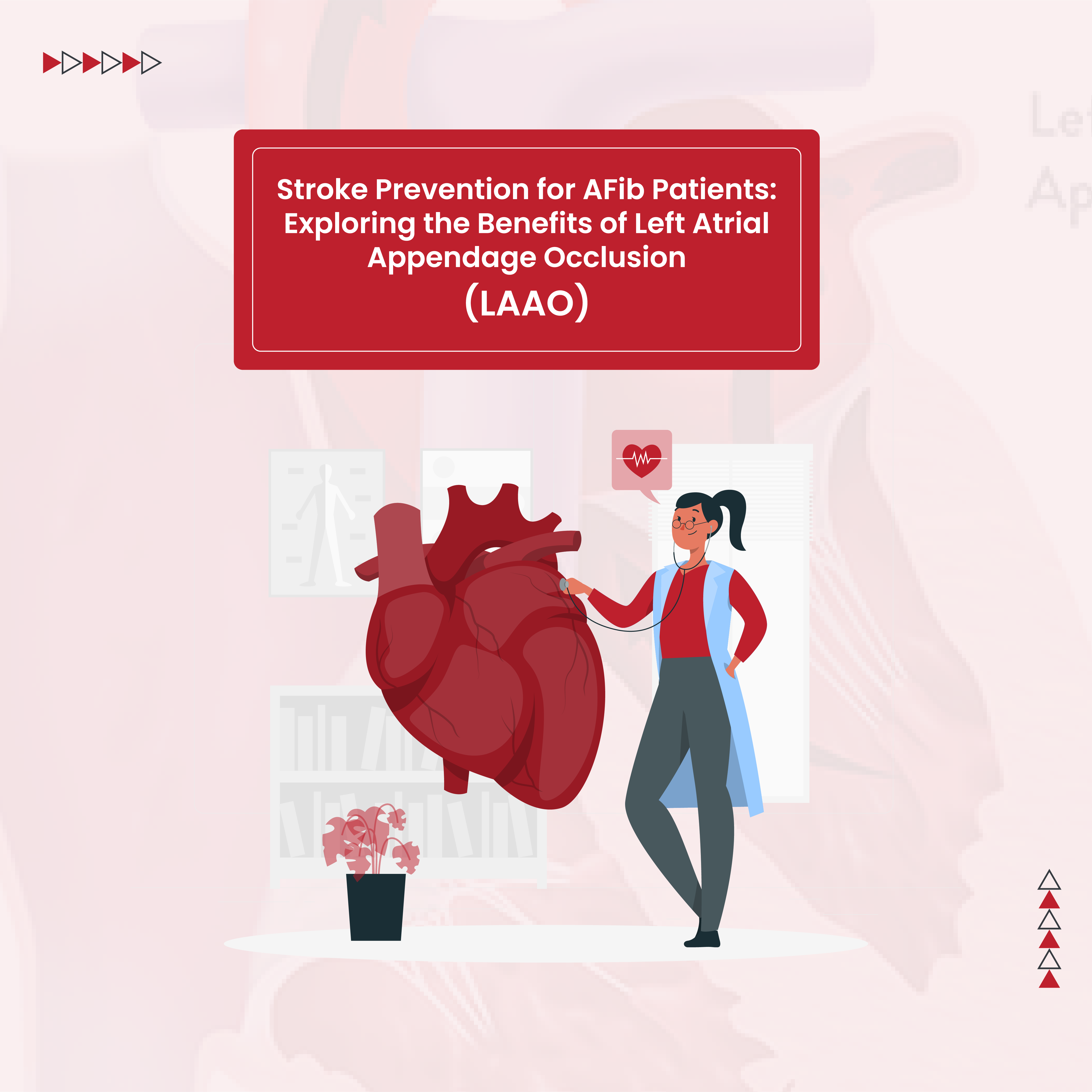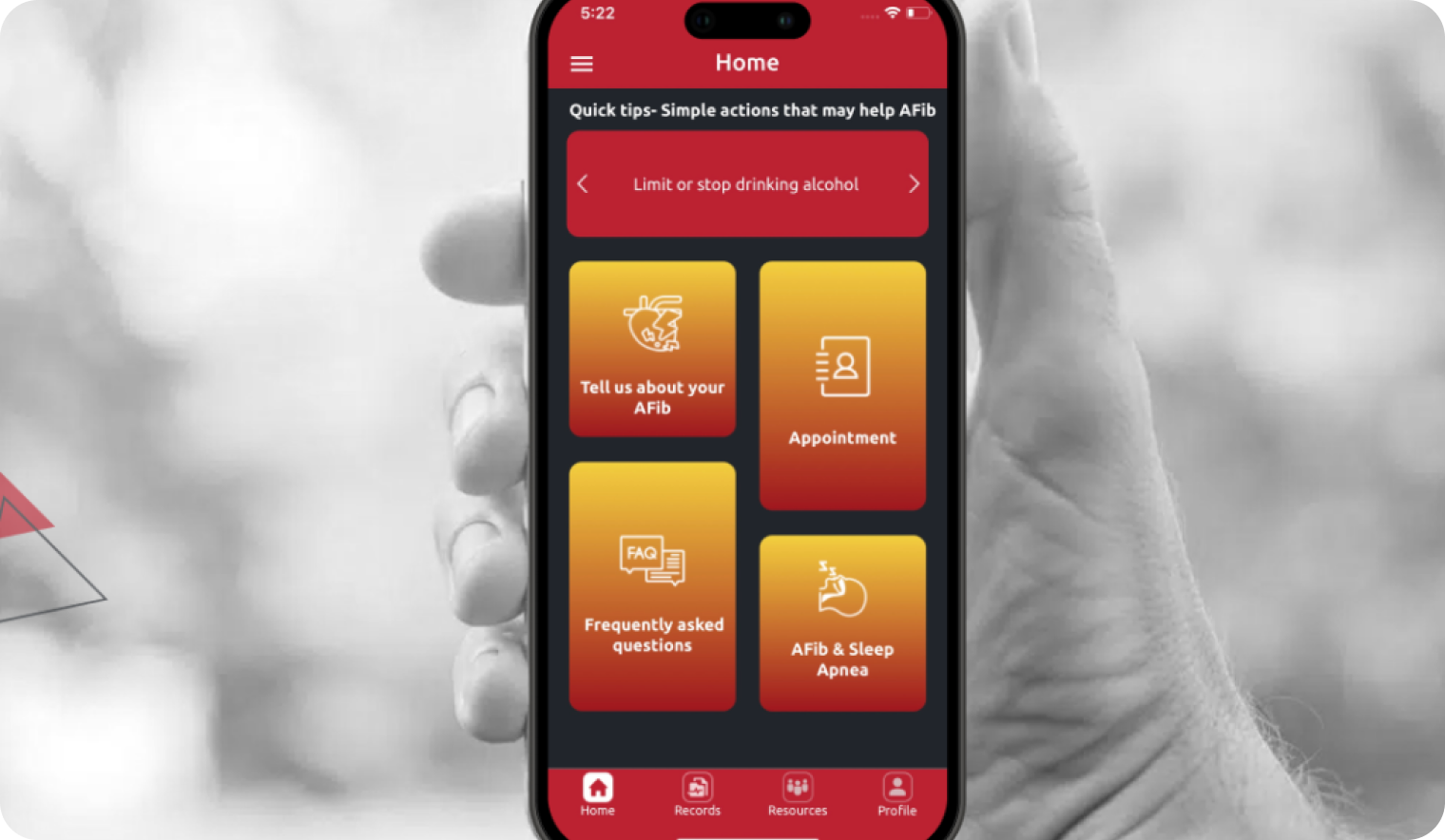Is Exercise Good for AFib?
Exercise is an important component of a healthy lifestyle and overall heart health. If you have atrial fibrillation, exercise is especially vital. In fact, research shows that regular exercise can help decrease the frequency of atrial fibrillation (AFib) episodes and improve AFib-related symptoms and quality of life. However, a common question that people with AFib have is, “What is the best exercise for Atrial Fibrillation?”
Studies indicate that the best exercise for AFib is regular, moderate-intensity physical activity. In fact, there is an inverse relationship between regular exercise and AFib, and people who engage in regular, moderate-intensity physical activity have been shown to cut their AFib risk by 25%.
Exercising with AFib has both direct and indirect benefits. Almost 50% of AFib risk is connected to modifiable risk factors like obesity, high blood pressure, sleep apnea and type 2 diabetes. For people with atrial fibrillation, exercise and a healthy lifestyle decreases the incidence of these risk factors which positively impacts AFib management. A direct benefit of exercising with AFib is physical activity’s ability to decrease systemic inflammation. This is an atrial fibrillation exercise benefit because inflammation is irritating to the heart’s electrical system and is a known trigger for atrial fibrillation.
Can You Exercise with AFib?
In addition to contributing to general heart health, it is well established that regular exercise and improving physical fitness is beneficial for people with atrial fibrillation.
“Ok,” you think. “But can I exercise during an AFib episode?”
Many people find that their exercise capacity is significantly reduced when working out with AFib. You may have noticed that when you are in atrial fibrillation, exercise makes your atrial fibrillation symptoms worse. Common symptoms you may experience while exercising with AFib include:
- Shortness of breath
- Decreased endurance
- Exaggerated heart rate response for the level of work performed. For example, if your heart rate normally stays around 125 beats per minute while you exercise you may find that exercising with AFib causes it to quickly accelerate to 150 to 170 beats per minute while doing the same amount of exercise.
- Lightheadedness or dizziness
- Fatigue or tiredness
- Chest pain
These symptoms may be solely from the chaotic rhythm of atrial fibrillation and the heart’s decreased ability to effectively pump blood from the upper to lower heart chambers. Atrial fibrillation exercise symptoms may also be a sign that your heart rate while in AFib is not being adequately controlled with medications.
The relationship between atrial fibrillation and exercise risk is influenced by how well your atrial fibrillation is controlled. Working out with AFib when the heart rate is not well-controlled puts unnecessary strain on the heart and increases the risk of atrial fibrillation related complications. Some people with atrial fibrillation are able to exercise without limitation as long as the heart rate is controlled. Other people remain symptomatic and report shortness of breath, palpitations, fatigue and decreased exercise tolerance as long as they remain in atrial fibrillation regardless of how well the heart rate is controlled.
Experts increasingly recommend rhythm control as an initial treatment strategy for atrial fibrillation. Previously, rate control (i.e. controlling a person’s heart rate while in atrial fibrillation) was considered a higher priority than rhythm control (i.e. using medications or procedures to stay out of AFib and in a normal heart rhythm). If you have continuous atrial fibrillation, you may need an electrical cardioversion to revert your heart from atrial fibrillation to a normal rhythm. Your medications may be adjusted before or after the cardioversion to help keep your heart in a normal rhythm. Check with your doctor to see when it is ok to resume exercise after cardioversion.
When maintaining a normal heart rhythm is not possible, rate control of atrial fibrillation, both at rest and with exercise, becomes the primary goal. In this case, as long as heart rate is adequately controlled, exercising with AFib is not contraindicated.
See your doctor if you develop AFib after exercise. This may be a sign that you are exercising too hard, that your medications need to be adjusted, or that underlying AFib triggers need to be reassessed and treated.
What is the Best Exercise for Atrial Fibrillation?
Regular exercise that is moderate in intensity reduces atrial fibrillation. If you have AFib and are physically inactive, your doctor may refer you to a supervised exercise program or give you an exercise prescription.
A study published in 2015, in the Journal of the American College of Cardiology, showed that baseline fitness and subsequent improvements in fitness impacted atrial fibrillation occurence over the course of 4 years. In this study, people with atrial fibrillation participated in a physician-led exercise program which was designed to improve exercise capacity and produce weight-loss. Among participants who had minimal improvement in their exercise capacity, 89% had AFib recurrence. Whereas only 40% of participants who had greater gains in fitness level had recurrence of atrial fibrillation.
Multiple large studies have investigated how much does exercise help with AFib and have demonstrated similar results showing a progressive decline in atrial fibrillation with increasing amounts of physical activity. There is a limit to the positive effect of exercise, though, with evidence pointing to diminishing benefit or even increased risk of AFib with vigorous exercise training. For example, a study which followed almost 53,000 long-distance cross-country ski racers in Sweden over the course of 16 years found a 20-30% increased risk of AFib when comparing the faster with slower finishers.
It is important to note that this correlation between atrial fibrillation and exercise risk has only consistently been observed in people who are extreme exercisers, a designation which is estimated to be achieved by less than 1% of Americans.
The American Heart Association has endorsed the 2018 Physical Activity Guidelines which recommends that adults get 150 minutes per week of moderate-intensity physical activity, or 75 minutes per week of vigorous physical activity, or a combination of the two. Ideally, exercise is spread out over the course of the week. Exercising at this level does not increase the risk of atrial fibrillation.
Being physically active has numerous benefits and contributes to AFib prevention and management. A regular exercise routine decreases the incidence of atrial fibrillation risk factors like obesity, high blood pressure, diabetes, coronary heart disease, and sleep apnea.
In addition, an exercise routine which includes 150 minutes of moderate-intensity physical activity per week leads to increased muscle mass, insulin sensitivity, and has anti-inflammatory mechanisms. Each of these, in turn, act to decrease atrial fibrillation. These arrhythmia exercise benefits appear to be independent of the improvement of AFib risk factors.
Is Walking Good for AFib?
Brisk walking is an excellent form of moderate-intensity exercise that is easily accessible to many people. Other forms of exercise that qualify as moderate-intensity are:
- Running at a 10 minute per mile pace
- Water aerobics
- Biking 1 mile in 6 minutes
- Doubles tennis or pickleball
- Playing basketball or volleyball
- Pushing a lawn mower
- Gardening
The goal is 30 minutes of moderate-intensity exercise, at least 5 days per week. While the 30 minutes does not need to be done all in one exercise episode, exercise experts recommend exercising for at least 10 minutes per episode in order to get the cardiorespiratory benefits.
You can gauge exercise intensity by monitoring your heart rate and there are numerous heart rate calculators available online to help you determine your target heart rate depending on your desired exercise intensity. An even easier way to tell how hard you are exercising is by gauging your exercise effort:
- Low-intensity physical activity. Your breathing is not labored and you can easily carry on a conversation.
- Moderate-intensity exercise. You can still carry on a conversation but you are breathing hard enough that it takes some effort. You develop a light sweat after about 10 minutes of exercise.
- High-intensity exercise. Breathing has become more labored and carrying on a conversation is difficult or not possible. You begin sweating after a few minutes of exercise.
Moderate-intensity physical activities like those listed above are excellent atrial fibrillation exercise options but there are other kinds of exercise that can also be beneficial for atrial fibrillation.High-intensity interval training (HIIT). Improves cardiorespiratory fitness and muscle strength in a time efficient format which may help you consistently find time in your
- busy schedule to get your workout done. HIIT exercise has been shown to decrease AFib episode frequency and duration, decrease AFib-related symptoms and improve quality of life for people who participated in a HIIT exercise program 3 times per week for 12 weeks.
- Yoga. Low to moderate-intensity physical activity and stress management including meditation, posture, muscle stretching and strengthening and breathing exercises for AFib.
Can I Exercise With Atrial Flutter?
Atrial flutter is an abnormal heart rhythm that is closely related to atrial fibrillation. Atrial flutter and exercise can cause symptoms that are similar to exercising with AFib and can include shortness of breath, fatigue, decreased endurance and exaggerated heart rate response to exercise. Atrial flutter exercise has the risk of triggering a heart rhythm called 1:1 atrial flutter in which a person develops a dangerously elevated and sustained heart rate. Many experts recommend against participating in competitive sports while in atrial flutter.
An important difference between atrial fibrillation and typical atrial flutter is that atrial flutter has a high cure rate with ablation. Therefore, ablation is usually the recommended treatment for typical atrial flutter. If you have atrial flutter that has been cured by an ablation, there are no further atrial flutter exercise restrictions.
If you are currently being treated for atrial fibrillation or atrial flutter, ask your doctor about exercise recommendations to optimize your arrhythmia management and overall heart health.








